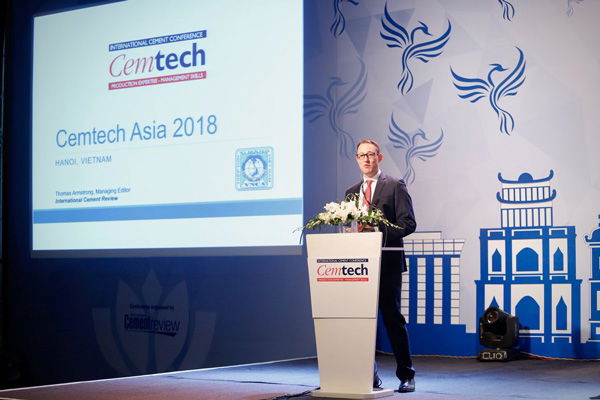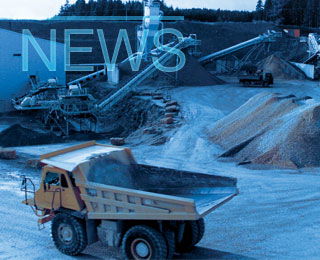The Cemtech Asia conference and exhibition has opened at the Meliá Hanoi, Vietnam, with delegates from 35 nations participating in this annual meeting of cement professionals.
Thomas Armstrong, managing editor of International Cement Review, inaugurated the conference by observing the importance of the Asian cement sector, where 75 per cent of the world’s cement is consumed. Mr Armstrong delivered an introduction to the 10 markets of the ASEAN region which has seen its consumption double since 1997 to 220Mt in 2017. In particular, Vietnam has recorded significant growth over the past 30 years, from 2.57Mta to 60Mta in 2018. An ideal example of this extraordinary growth is the recently-commissioned 12,500tpd line at Xuan Thanh Cement’s facility in Ha Nam, which delegates were invited to visit as part of this year’s event.

Thomas Armstrong, managing editor of International Cement Review, inaugurates the Cemtech Asia
conference and exhibition at Meliá Hanoi, Vietnam
The first morning of the conference continued with a detailed overview of Asian markets. Nguyen Quang Cung, president of the Vietnam National Cement Association, examined the current structure of the country’s industry and provided a forecast of forthcoming developments. Tongbo Sui, China Cement Association, provided an overview of the Chinese cement industry and highlighted the importance of upgrading and adapting it for green manufacturing and circular development. The industry aims to reduce CO2 emissions by 40-45 per cent per unit of GDP by 2020 and continue efforts to co-process municipal solid waste (MSW) and reduce NOx emissions.

Dr Tongbo Sui, CCA, China, highlights China's
progress towards sustainability in the cement industry
Shailendra Chouksey, Cement Manufacturers’ Association, explored how the Indian cement industry will face rising demand from government projects such as the Housing For All scheme to build 10.7m homes in rural areas and 3.7m in urban regions. Furthermore, the industry is expected to benefit from increased investment in infrastructure and new products, such as low-carbon cement. Yourong Chen, CNBM Group, followed this by showing trends for energy-saving technology in the Chinese cement industry. In its 13th five-year plan, the country announced its intention to reduce both NOx emissions and energy intensity per GDP by 15 per cent before 2020, compared to the figures of 2015. Mr Chen noted several examples where this can be applied, such as precalciners which increase kiln capacity and prolong the remaining time of gas, thereby increasing the energy-saving characteristics of the burning system.
Soe Naing, Myanmar Cement Association, analysed the future risk of overcapacity within Myanmar’s cement industry. The country currently operates 18 plants, two clinker grinding plants and a terminal, with a total production of 7Mta. While the industry began producing surplus in 2015, several future construction projects could lead to a demand of up to 25Mta.
The first day of the conference concluded by exploring technical advances such as FCT Combustion’s highly successful efforts to use a flexible burner design to maximise low-grade coal and alternative fuels. Technical presentations will continue into the second day of the programme, with KHD showing the benefits of using a roller press for finish grinding of raw material, cement and slag.
Alongside the main conference programme, Cemtech Asia is hosting its largest-ever 38-stand exhibition to showcase the latest manufacturing technology.
Cemtech Asia continues until 27 June. The conference will feature significant industry developments and look to the future of the sector.
